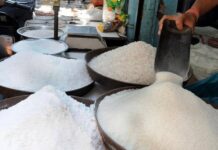- The tragedy was international, not just national or local
AT PENPOINT
There was an element of déjà vu about the protesters in Quetta. It was not the first time that Hazaras had been killed, and not the first time that Hazaras had refused to bury people who had been killed by terrorism. The last time had shown the ghettoization of Quetta, as the terrorism had been a blast inside a snooker club in January 2013, followed by another blast in the same place a little later, to catch the rescuers as well.
However, the last time, the blasts occurred on a Thursday, and the bodies of 96 protesters were only buried after a visit by the then Prime Minister, Raja Pervez Ashraf. Then too the moving force behind the protest was the Majlis Wahdat ul Muslimneen, a party which elects one MPA from Quetta, from its only constituency where Hazaras have a majority.
Hazaras were slaughtered again, but this time a smaller number, 15. This time, there were ‘only’ 15 corpses, again all Hazara, all Shia, and there was an unseemly and sometimes heated debate after Imran Khan refused to go to Quetta until the victims were buried. As he bluntly said, he ‘refused to be blackmailed’. Imran had taken his time. While Raja Pervez had reached on a Sunday after the blasts took place on Thursday night, Imran went on a Saturday (January 9) after the Hazara coalminers in Machh were slaughtered in their beds the Sunday before.
Hazaras have not suffered only in these two incidents. They are not targeted because they are Hazaras, but because they are Shias. They are descended from Mongols, who converted to Islam centuries ago, to the Ismaili version of Shiaism. However, as it declined in numbers, they joined the general exodus from Ismaili-ism to the Isna Ashariya. Hazaras died before the January 2013 blasts, and died again afterwards, the next major attack occurring the next month, when a bomb in a market killed 91.
There is also the issue of the wider message, one that becomes less clear with every step away from the corpses. The Hazaras might be an isolated and small minority in Pakistan, but what happens to them resounds wherever else Hazaras are, which is mainly Iran and Afghanistan. Also, these Hazaras are Shias, which means that they will find sympathy in a large number of people in not just Pakistan, but around the world, especially in Iran.
They have been targeted in the past by the Lashkar-e-Jhangvi, but this latest outrage has been claimed by the Islamic State, which does not mean that different people are involved, simply that Lashkar members may have switched to the IS.
One reason why militants can switch from one group to another is because of ideological, indeed theological, compatibility. It must be remembered that a theological construct may contain a large collection of beliefs, but it is not necessary that they will all be operationalized at the same time. Just because the JUI(F) and the Lashkar-e-Jhangvi both belong to the Deobandi school of thought does not mean that the JUI(F) will target Shias, or that the Lashkar will struggle for the supremacy of the Constitution. However, it does mean that the JUI(F) and the Lashkar share views both on Shias and the Constitution. This ideological similarity is furthered by the fact that the same individual may be in both organisations, though in different capacities: the Lashkar high official may merely passively sympathise with the JUI(F), while the JUI(F) office bearer will sympathise with the Lashkar.
In Quetta, that has led to a strange combination. For more global political reasons, the Majlis Wadat ul Muslimeen has not joined the Pakistan Democratic Movement. The PDM itself is headed by JUI(F) chief Maulana Fazlur Rehman. The Majlis has not joined the PDM, but its welcome, on the day before Imran visited, of PDM leaders Maryam Nawaz and Bilawal Bhutto Zardari, showed that it could develop sympathies with it. Quetta is something of a no-man’s land, for while the Baloch are ousted from it, it is disputed between the three power centres of Majlis Wahdatul Muslimeen, the Pasktankhwa Milli Awami Party and the JUI(F). The JUI(F) is not just a Deobandi party, but it is also strongly Pakhtun, with its influence in Balochistan restricted to its Pakhtun areas. It is worth noting that that while the PkMAP has joined the PDM, the Majlis has stayed aloof.
The Hazaras cannot claim to be disempowered. Though numerically a minority in one city in the country’s smallest province, they produced Gen Muhammad Musa, who was Commander-in-Chief of the Pakistan Army, from 1958 to 1966, and then Governor of West Pakistan. It should be noted that such posts are given more value in Balochistan than other provinces, as shown recently by the grant of the Chairmanship of the Senate to a Senator from Balochistan, Aslam Sanjrani. There was similar excitement when Mir Zafarullah Jamali became the first person from the province to become Prime Minister. The Presidency and the Speakership of the National Assembly remain.
At the same time, the Hazaras of Quetta are not to be confused with the Hazaras of Afghanistan, though they both speak the same Hazari Persian, which is a version of the Dari dialect used in Afghanistan. The Hazaras of Quetta had moved there from Afghanistan after their uprising against the Barakzai monarch (following the First Afghan War there had failed). They are Hazaras because they hailed from the Hazarajat of Afghanistan. This is in contrast to the Hazarajat in Khyber Pakhtunkhwa, which sustains a Hindko-speaking population in its Hazarajaat, who are known as Hazarawals, not Hazaras. General Musa’s boss, President Ayub Khan, was a Hazarawal.
Hazaras are traders, using links with fellow Hazaras across the border with Iran. Hazaras are thus woven into the weft of Iranian as well as Pakistani Balochistan. However, they have been caught up in ethnic upheaval as well as sectarian unrest. However, while there has been an upsurge in Baloch separatism, it seems to have has passed them by. They have their hands full with sectarian targeting.
Imran’s reluctance to go to Quetta was seen as belittling, while his saying he would not be blackmailed was seen as going a little too far, leading to his clarification that he meant the opposition. If compared with how Raja Pervez reacted, merely going there was not enough. Raja Pervez had sacked the IGP Balochistan and the DG IB as well, but there had been no end to the suffering of the Hazaras, as shown by this latest attack. However, Imran has not taken even that action, or any equivalent. The message the Hazaras will take is the PM does not care what happens to them. This might not be true, but that is what they will take away.
There is also the issue of the wider message, one that becomes less clear with every step away from the corpses. The Hazaras might be an isolated and small minority in Pakistan, but what happens to them resounds wherever else Hazaras are, which is mainly Iran and Afghanistan. Also, these Hazaras are Shias, which means that they will find sympathy in a large number of people in not just Pakistan, but around the world, especially in Iran.
The Prime Minister’s going to Quetta should not lack consequences, as Raja Pervez’s did. Was the failure to go, or to take action, an admission of impotence? All that talk of a threat to the PM was just a cover for the realization that the visit would serve no useful purpose.
But the controversy did serve to focus, paradoxically, on the reality that the Quetta tragedy was not just for Hazaras, Shias, or even Pakistanis, but for all Muslims, all human beings. Even by going to Quetta, Imran didn’t get more than a bit part.























